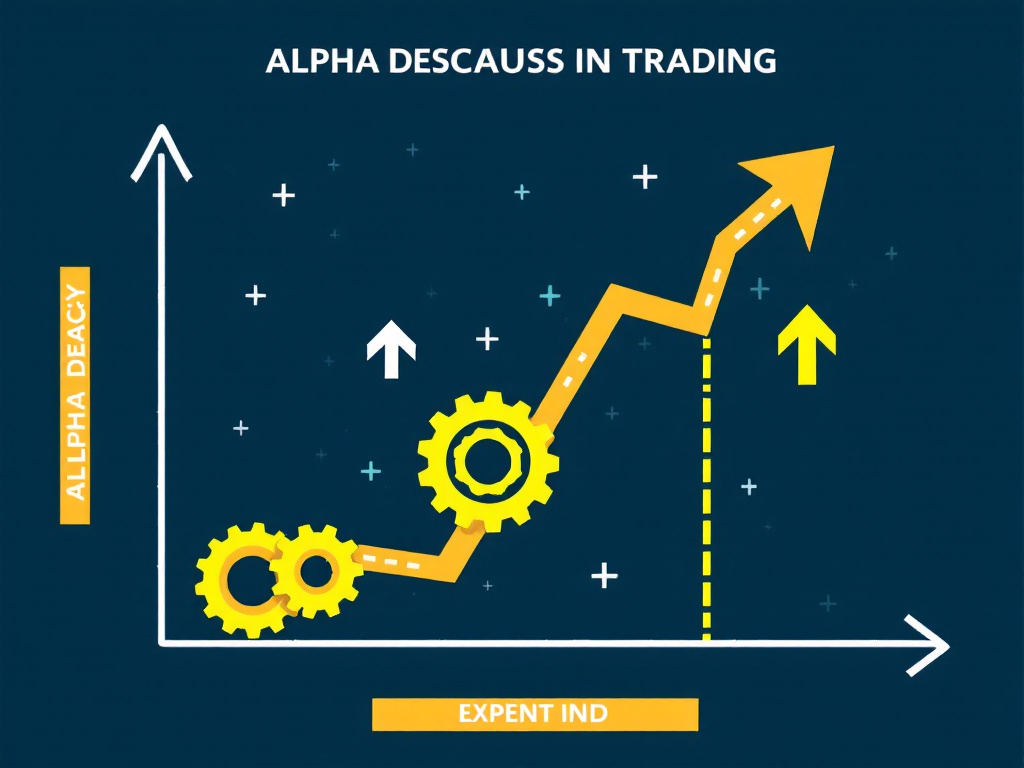Strategic Momentum Strategies in Prop Trading
In the fast-paced world of prop trading, momentum strategies have become a staple for generating consistent alpha in challenging markets. This blog post is crafted for prop trading professionals—from junior traders to seasoned quants—who are looking to enhance their strategy development and backtesting methodologies. Here, we provide advanced insights into momentum trading, discussing actionable tactics, common pitfalls, and innovative tool comparisons that can significantly improve your trading performance.
Understanding Momentum Strategies in Modern Prop Trading
Momentum trading revolves around the idea that assets that have shown past performance trends will continue to do so in the near future. In a proprietary trading context, this requires precision, robust backtesting, and a deep understanding of market microstructure. Our discussion today will walk you through:
- The core principles behind momentum strategies
- Advanced backtesting techniques tailored for momentum trading
- Tool recommendations and case studies from leading prop trading firms
Key Elements of Successful Momentum Strategies
A successful momentum strategy in prop trading is built on the following pillars:
- Data Quality: Access to high-resolution data is crucial. Preferably tick data or bar data from reliable sources.
- Backtesting Rigor: Avoid overfitting and ensure rigorous validation using out-of-sample data.
- Risk Management: Integrate stop-loss, drawdown limits, and volatility metrics such as the Sharpe Ratio.
Mastering these elements enables traders to not only design strategies but also to confidently deploy them across various market conditions.
Figure 1: Screenshot of an advanced backtesting report interface demonstrating key metrics such as drawdown and Sharpe Ratio.
Advanced Backtesting Techniques for Momentum Strategies
Backtesting is the cornerstone of any robust trading strategy. However, simply running historical data isn’t enough. Here are some advanced techniques to further refine your approach:
Mitigating Common Backtesting Pitfalls
Traders often encounter several challenges in backtesting, including:
- Overfitting: Designing a model that perfectly fits past data but fails in live markets. Use walk-forward optimization to counter this.
- Survivorship Bias: Include delisted stocks or instruments to avoid skewed results.
- Look-Ahead Bias: Ensure that your testing algorithm only uses data available at the time of prediction.
- Data Snooping: Test multiple strategies on the same dataset with rigorous statistical validations.
Walk-Forward Optimization vs. Traditional Backtesting
Unlike standard backtesting, walk-forward optimization adapts dynamically to market conditions. It involves dividing historical data into training and testing windows. The training phase calibrates the model, and the testing phase evaluates its performance on unseen data. This method helps in:
- Identifying model robustness across varying market regimes
- Reducing the risk of overoptimism in performance metrics
- Enhancing the reliability of future trading outcomes
Comparative Analysis of Leading Backtesting Tools
For the tech-savvy prop trader, integrating automated backtesting tools is essential. Below is a detailed comparison of some of the most widely recognized platforms:
| Tool | Backtesting Features | Data Quality | Integration | Pricing & Free Options | Prop Firm vs. Retail Use Case |
|---|---|---|---|---|---|
| TradingView | Vectorized backtesting with community scripts and manual parameter adjustments. | Comprehensive stock, forex, and crypto data with real-time feeds. | APIs for brokers and chart integration. | Free with premium tiers available. | Ideal for individual traders; also suitable for rapid prototype validation in prop firms. |
| MetaTrader 5 | Supports both event-driven and vectorized testing with commission and slippage modeling. | Extensive forex and CFD datasets. | Robust API and third-party plugin integration. | Free demo; tiered licensing for professionals. | Widely used among both retail traders and firm-level environments. |
| NinjaTrader | Advanced simulation with real-time market replay and optimization capabilities. | Rich historical futures and forex data. | API integration with multiple brokerage firms. | Free for simulation; full features with paid license. | Best suited for prop trading firms requiring team collaboration features. |
| QuantConnect | Event-driven backtesting with automated parameter optimization and scenario analysis. | Deep historical datasets across asset classes including equities, forex, and crypto. | API and cloud integration, supporting custom analytics platforms. | Free community version; subscription plans available. | Highly scalable; ideal for both retail algorithmic traders and prop firm quant teams. |
This comparative table underscores the importance of selecting a tool that aligns with your specific trading requirements. Detailed evaluation of features like API access, historical data depth, and automation capabilities is critical when scaling from individual to institutional trading environments.
Integrating Backtesting With Forward Testing
While backtesting provides historical validation, integrating these results with forward testing (or paper trading) is essential before live deployment. Key steps include:
- Implementing Out-of-Sample Testing: Reserve a segment of data for validating strategy performance post backtesting.
- Transitioning to Paper Trading: Monitor real-time market conditions and model performance.
- Using Performance Metrics: Evaluate using metrics like the Sharpe Ratio, maximum drawdown, and profit factor to ensure consistency.
Example: Python Code Snippet Using Backtrader
import backtrader as bt
class MomentumStrategy(bt.Strategy):
params = (('period', 20), )
def __init__(self):
self.sma = bt.indicators.SimpleMovingAverage(self.data.close, period=self.params.period)
self.rsi = bt.indicators.RSI(self.data.close)
def next(self):
if self.data.close[0] > self.sma[0] and self.rsi[0] < 70:
self.buy()
elif self.data.close[0] < self.sma[0] or self.rsi[0] > 70:
self.sell()
cerebro = bt.Cerebro()
# add data, strategy, broker settings...
# cerebro.run()
This snippet demonstrates a basic momentum strategy integrating technical indicators. For prop traders, augmenting such scripts with automated parameter optimization and stress testing capabilities is crucial.
Case Study: Enhancing a Prop Trading Portfolio With Momentum Strategies
Consider a mid-sized prop firm facing challenges in rapidly adjusting to market extremes. By employing an automated backtesting framework using QuantConnect combined with NinjaTrader for real-time adjustments, the firm was able to:
- Improve the average Sharpe Ratio by 15% through rigorous out-of-sample testing.
- Reduce maximum drawdown by 10% by integrating adaptive risk controls.
- Accelerate strategy iteration cycles, leading to faster deployment of optimized trading models.
Pro Tips for Prop Traders
Industry Insight: Always ensure that your backtesting setup includes automated scenario analysis and stress testing to anticipate extreme market conditions. Regularly review data integrity and update your models to adhere to evolving market regulations such as MiFID II and ESMA directives.
Figure 2: Detailed backtesting report featuring performance metrics critical for prop traders, including drawdown analysis and optimization results.
Regulatory Considerations in Prop Trading
Prop traders must navigate regulatory frameworks like MiFID II, ESMA, and NFA rules, which influence strategy deployment and risk management. Compliance guidelines require:
- Maintaining detailed audit trails of trading activities.
- Incorporating risk limits and controls within automated systems.
- Regular reporting and assessment of strategy performance with a focus on transparency.
Combining Data Integrity With Regulatory Compliance
Effective backtesting is not solely about model accuracy—it’s also about ensuring that your trading systems comply with regulatory standards. This means using validated data sources and maintaining rigorous documentation of all backtesting processes. Such practices protect prop trading firms from compliance risks and bolster overall trading integrity.
Next Steps for Prop Traders
To consolidate your learning and further refine your momentum strategies, consider the following actionable steps:
- Download our Risk Management Checklist to ensure your strategies align with industry benchmarks.
- Explore our detailed guide on integrating forward testing with automated backtesting for enhanced reliability.
- Join our upcoming webinar on advanced backtesting techniques for prop trading professionals.
For more insights, check out our related resources on Risk Management in Prop Trading and Automated Trading Strategies.
Conclusion: Embracing sophisticated momentum strategies and advanced backtesting methodologies can dramatically elevate your prop trading capabilities. Whether you are just starting or are a seasoned pro, the strategies and tools discussed here will help you navigate complex market dynamics with confidence and precision. Start refining your approach today and join the community of elite prop traders who consistently stay ahead of the curve.
As of October 2023, these strategies and tools continue to set industry benchmarks, ensuring prop traders remain agile and informed in a rapidly evolving marketplace.







